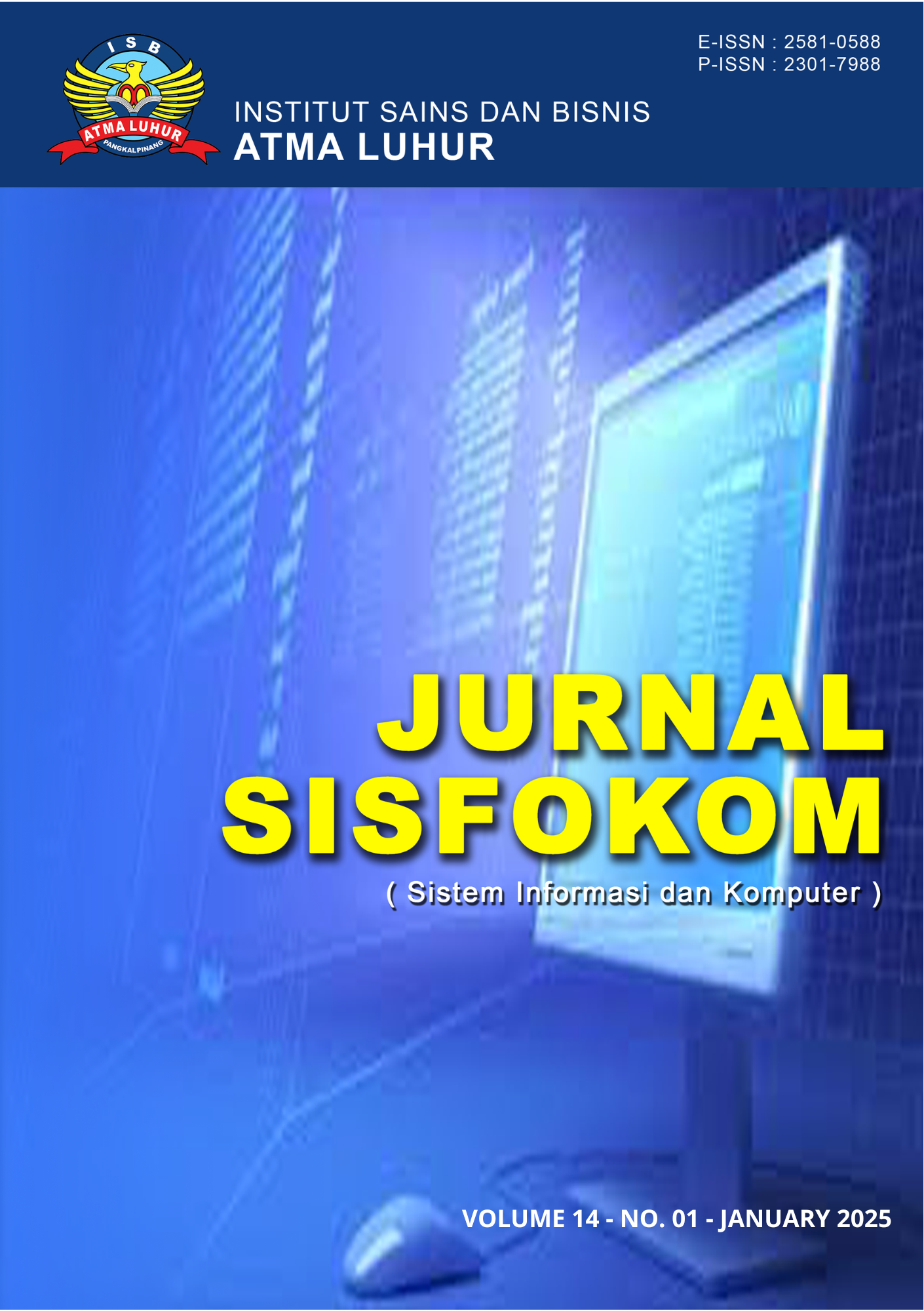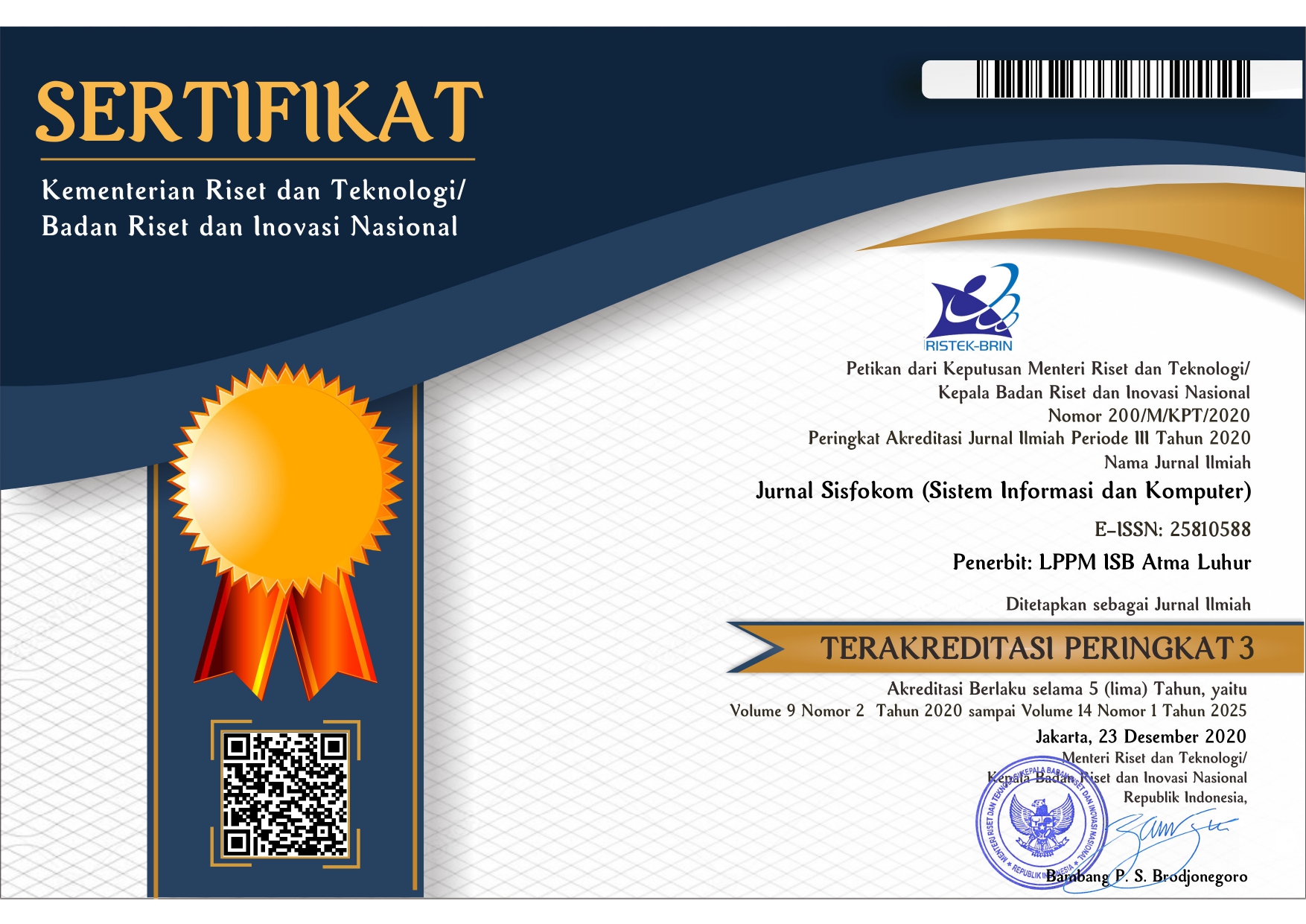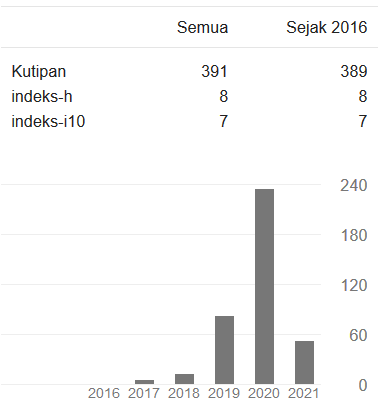Business Intelligence Model of Regional Hospitals using HGOD Discovery
DOI:
https://doi.org/10.32736/sisfokom.v14i1.2320Keywords:
Business Intelligence, HGOD Discovery, Hospital, Optimatization, Governance.Abstract
Based on data from the Regional General Hospital in the Bangka Belitung Islands province, the Gross Death Rate (GDR) is the general death rate for every 1000 patients discharged of 108,430 compared to the health department standard of <45. The Net Death Rate (NDR) is the death rate 48 hours after being treated for every 1000 patients discharged of 67,388 compared to the health department standard of <25. TOI (Turn Over Interval) is the average turnover period of days where a bed is unoccupied from being filled to the next time it is filled of 19,832 days compared to the health department standard of 1 to 3 days. The solution offered by the researcher develops Business Intelligence (BI) optimization with a new model called the HGO (Hierarchy, Governance, Outlook) Discovery approach as a framework model for developing business intelligence for regional general hospitals in Indonesia. This model is expected to be able to solve or reduce the dimensional problems that exist in hospitals, namely the main patient management, HR Key Resources, and the quality of inpatient health services. The HGO Discovery approach is able to find patterns in a series of events called sequences by sorting the work patterns that exist in the hospital so that the business process of regional general hospitals is faster and more interactive in decision making. The Business Intelligence approach carried out by regional hospitals with HGOD is expected to make patient health services more integrated through the hierarchy of patient services, governance and outlook in decision making.References
Abdulsattar A.H, (2022), Learning Methods of Business Intelligence and Group Related Diagnostics on Patient Management by Using Artificial Dynamic System, Journal of Nanomaterials, Volume 2022
Riallen L, Andrew C, (2016), Novel function discovery through sequence and structural data mining, Current Opinion in Structure Biology, Volume 38, Juni, Page 53-61
Celia M, Q Ramos, (2022), Business Intelligence Approach and Sentiment Analysis as a Management Strategy Applied to Study Customer Satisfaction in the Hospitality Sector, Advances in Tourism,
Technology and System, page 537-547
Cheng Che S, Chang Rey A, Hsu Ching J, Chang I C, (2017), How business intelligence maturity enabling hospital agility, Telematics and Informatics, Volume 34, Issue 1, page 450-456
Escher A, Hainch N, Boll D, (2016), Business Intelligence in Hospital Management, Radiology Managament, europepmc, page 47
Hao Yun kao et al, (2016), Design and evaluation of hospital-based business intelligence system (HBIS): A foundation for design science research methodology, Computer in Human Behavior, Volume 62, page 495-505
Tofighi S dkk, (2014), The Survey of Business Intelligence in the Baqiyatallah Hospital: Our Experience and Literature Review,
Intenational Journal of Medicine Reviews, Tehran, 2014
Jaou L, Braga J, Santos F.M, (2021), Adaptive Business Intelligence platform and its contribution as a support in the evolution of Hospital 4.0,
Procedia Computer Science, Volume 184, page 905-910
Rouhani, S., Ashrafi, A., Zare Ravasan, A. and Afshari, S. (2016), The impact model of business intelligence on decision support and organizational benefits, Journal of Enterprise Information Management, Vol. 29 No. 1, pp. 19-50
Meza S, Ricky A, Derisma, (2017), Pengembangan Model Business Intelligence Manajemen Rumah Sakit untuk Peningkatan Mutu Pelayanan (Studi Kasus : Semen Padang Hospital), Jurnal Edukasi dan Penelitian Informatika (JEPIN), Volume 3, No 2,
Zheng W, Jim Wu YC, Chen L, (2018), Business intelligence for patient- centeredness: A systematic review, Journal Telematics and Informatics,
Volume 35, Issue 4, Page 665-676
Hsu PC, Huang WN, Kuo KM, Yeh YT, (2022), Application of Business Intelligence in Decision Support to Hospital Management: An Example of Outpatient Clinic Schedule Arrangement, Europepmc,
Page 1050-1051
L. Hong, M. Luo, R. Wang, P. Lu, W. Lu, and L. Lu, (2019), Big data in health care: applications and challenges, Data and Information Management, vol. 2, no. 3, page. 175–197
Naderinejad M, Jafar Tarokh M, Poorebrahimi A (2014), Recognition and Ranking Critical Success Factors of Business Intelligence in Hospitals Case Study: Hasheminejad Hospital, arvix computer science, 1405.4597.
Kao Hao Y, Yu Min C, Masud M, Wu Wen H, Chen Li J, Wu Yen C, (2016), Design and evaluation of hospital-based business intelligence system (HBIS): A foundation for design science researchmethodology, Computers in Human Behavior, Volume 62, page 495-405
Downloads
Published
Issue
Section
License
Copyright (c) 2025 Jurnal Sisfokom (Sistem Informasi dan Komputer)

This work is licensed under a Creative Commons Attribution 4.0 International License.
The copyright of the article that accepted for publication shall be assigned to Jurnal Sisfokom (Sistem Informasi dan Komputer) and LPPM ISB Atma Luhur as the publisher of the journal. Copyright includes the right to reproduce and deliver the article in all form and media, including reprints, photographs, microfilms, and any other similar reproductions, as well as translations.
Jurnal Sisfokom (Sistem Informasi dan Komputer), LPPM ISB Atma Luhur, and the Editors make every effort to ensure that no wrong or misleading data, opinions or statements be published in the journal. In any way, the contents of the articles and advertisements published in Jurnal Sisfokom (Sistem Informasi dan Komputer) are the sole and exclusive responsibility of their respective authors.
Jurnal Sisfokom (Sistem Informasi dan Komputer) has full publishing rights to the published articles. Authors are allowed to distribute articles that have been published by sharing the link or DOI of the article. Authors are allowed to use their articles for legal purposes deemed necessary without the written permission of the journal with the initial publication notification from the Jurnal Sisfokom (Sistem Informasi dan Komputer).
The Copyright Transfer Form can be downloaded [Copyright Transfer Form Jurnal Sisfokom (Sistem Informasi dan Komputer).
This agreement is to be signed by at least one of the authors who have obtained the assent of the co-author(s). After submission of this agreement signed by the corresponding author, changes of authorship or in the order of the authors listed will not be accepted. The copyright form should be signed originally, and send it to the Editorial in the form of scanned document to sisfokom@atmaluhur.ac.id.









